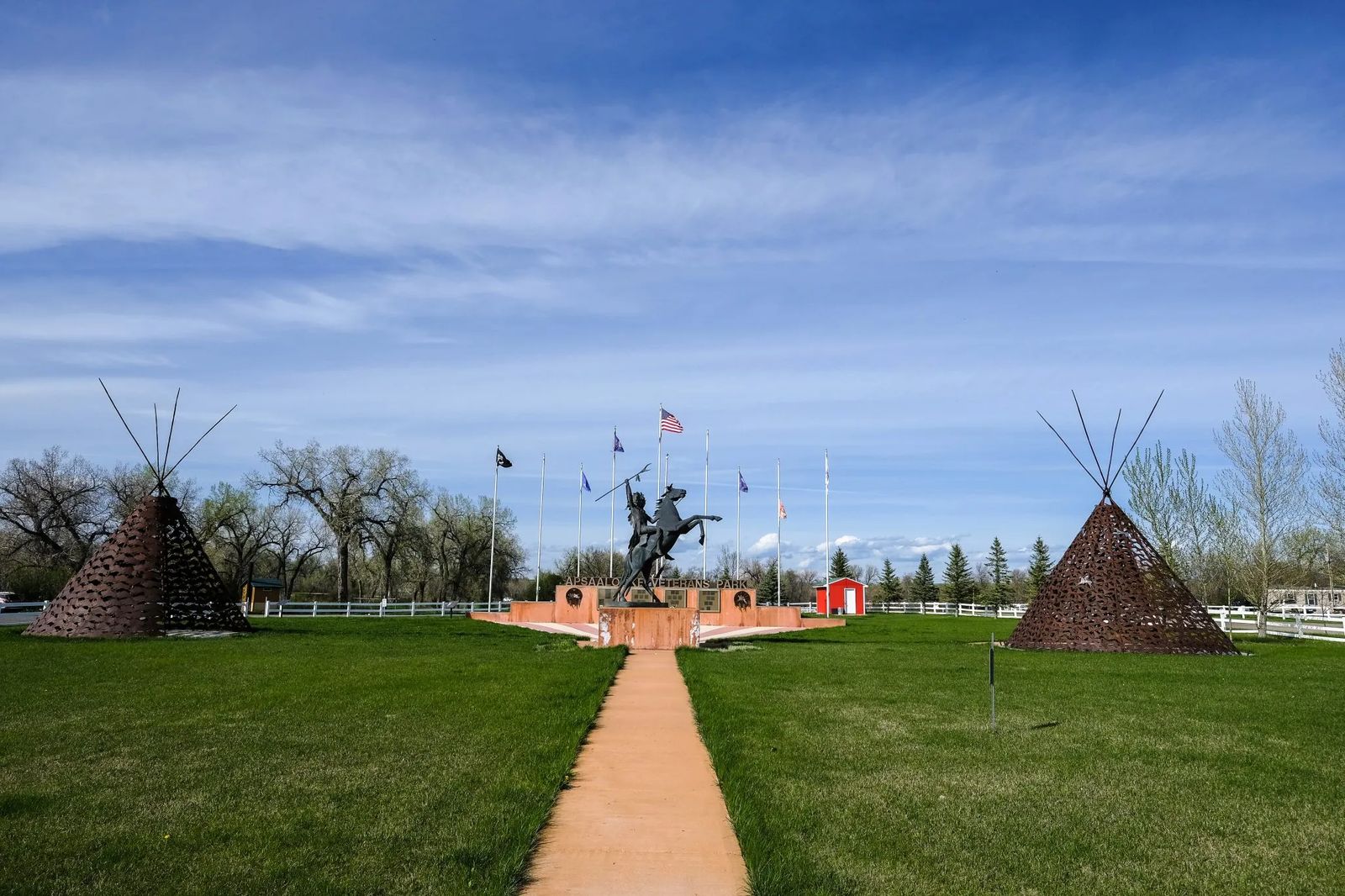
Faces & Places: Crow Agency
Culture, clans and ‘cayuses’
The story of Crow Agency — often called “Crow” by the locals — is the story of two different communities.
From the interstate, high-speed travelers get only a glimpse of the place: some well-worn buildings, a dog or two strolling the frontage road and horses of all colors dining on rich native grasses.
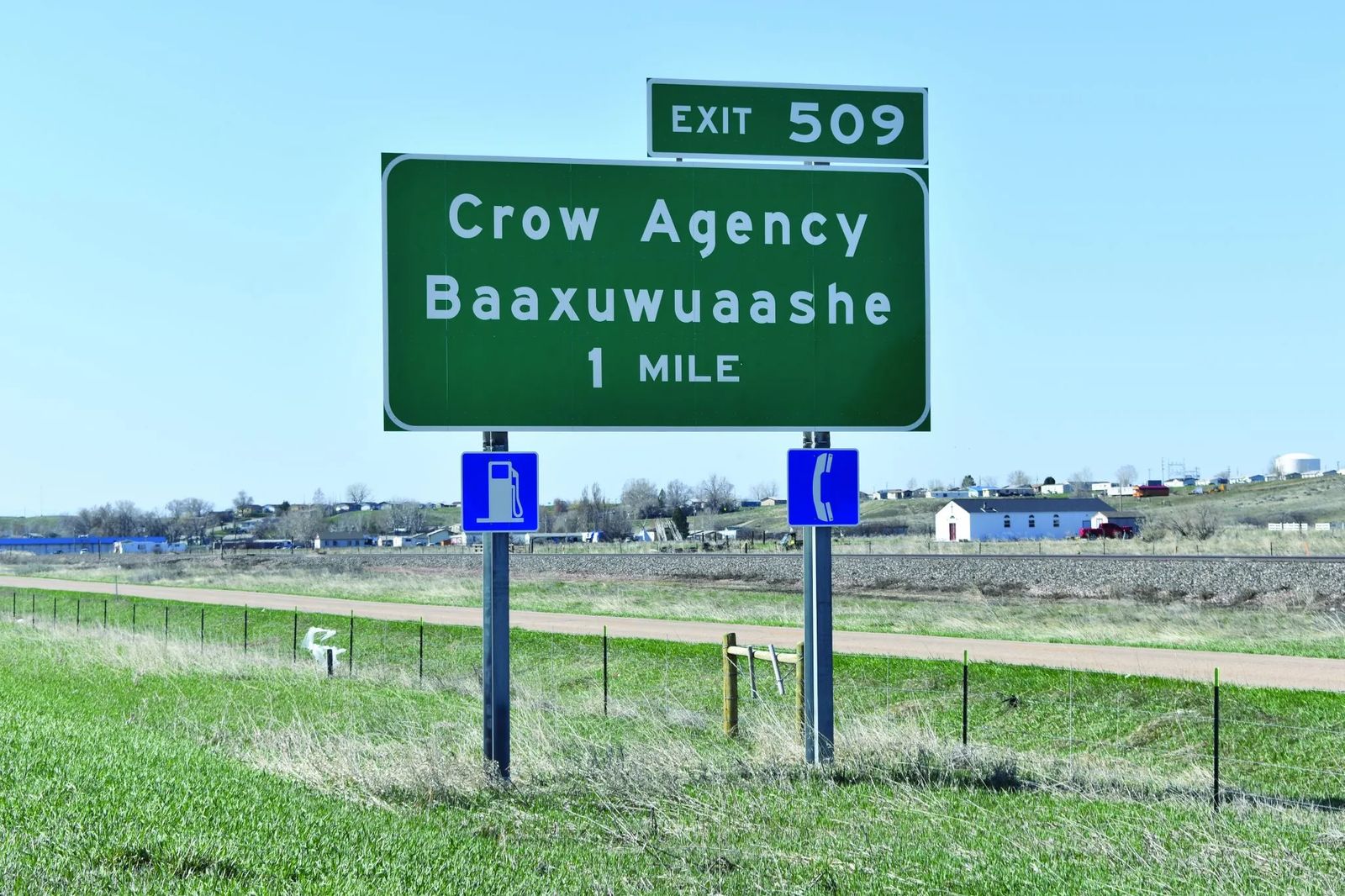
But anyone who drives into town will see another side of Crow Agency. It’s a community where locals welcome the curious, where long-held traditions mingle with present-day norms and where colorful festivities punctuate the year.
Locals call the community the heart of the Crow Nation and the headquarters of their tribal government. While Crow Agency has its struggles, its people are bound by their culture, tight family ties and a deep pride of place. Where else but Crow Agency would you see ponies grazing in a city park? Where else but the Little Big Horn College could you enroll in a class on the complexities of Crow family kinship? Where else might you experience the old-time neighborliness of the Apsaalooke Trading Post?
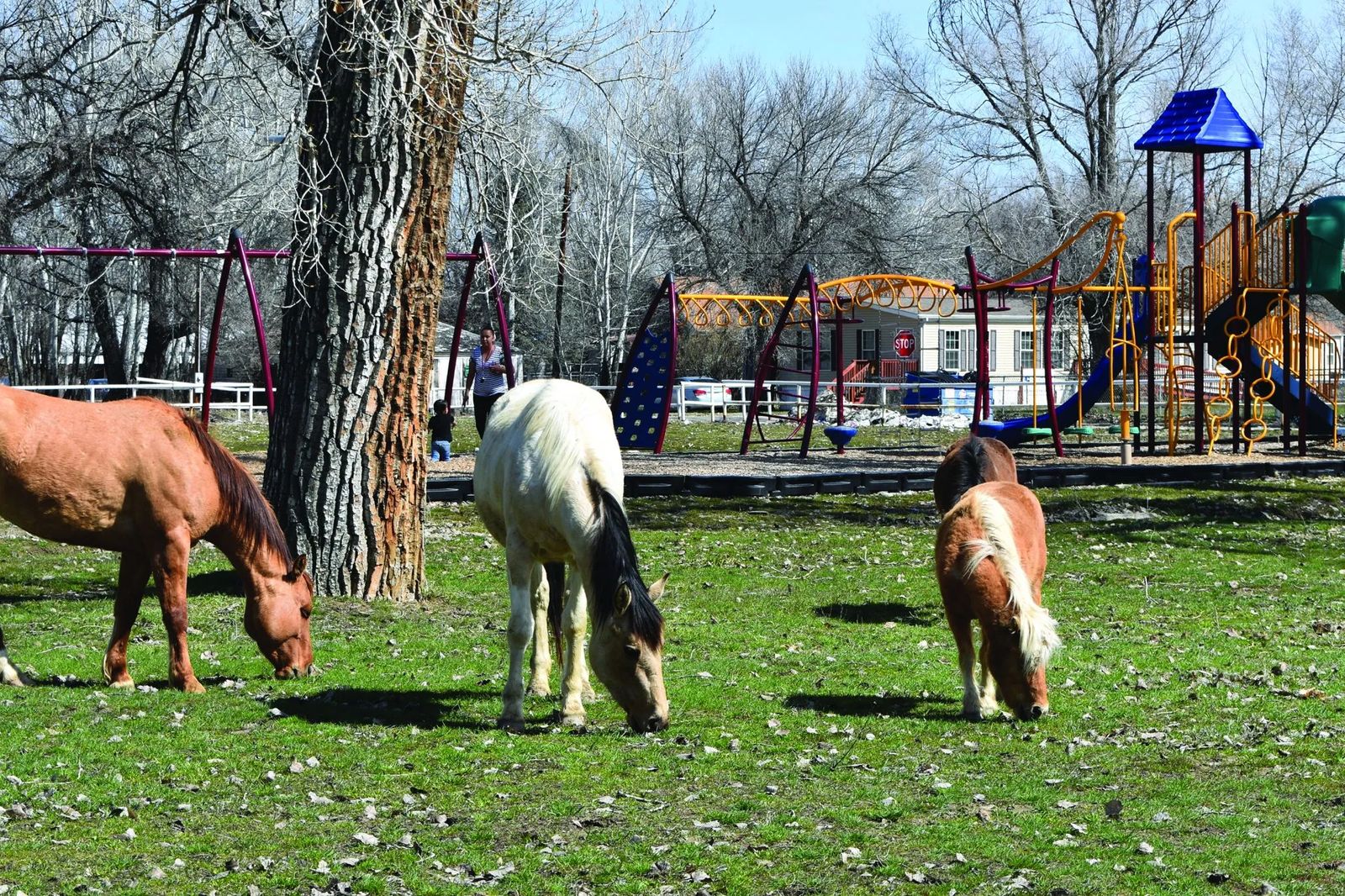
This area is literally the third Crow Agency. The first Crow Agency was established in 1868 at Mission Creek, a few miles east of Livingston. Then, in 1875, when the government reduced the size of the reservation, the headquarters for the Crow Tribe relocated to a site just south of present-day Absarokee. It wasn’t until 1884 — eight years after the Battle of the Little Bighorn — that the government redrew the reservation boundary once again and moved Crow Agency to its final and current site.
“At the time, it was a flat, bare spot, not a tree grew in the town,” wrote Mrs. J.J. Tomlinson in her history “Building Crow Agency.” Within just a few years, however, trees began to take root — planted there by children housed at the Crow Agency Boarding School.
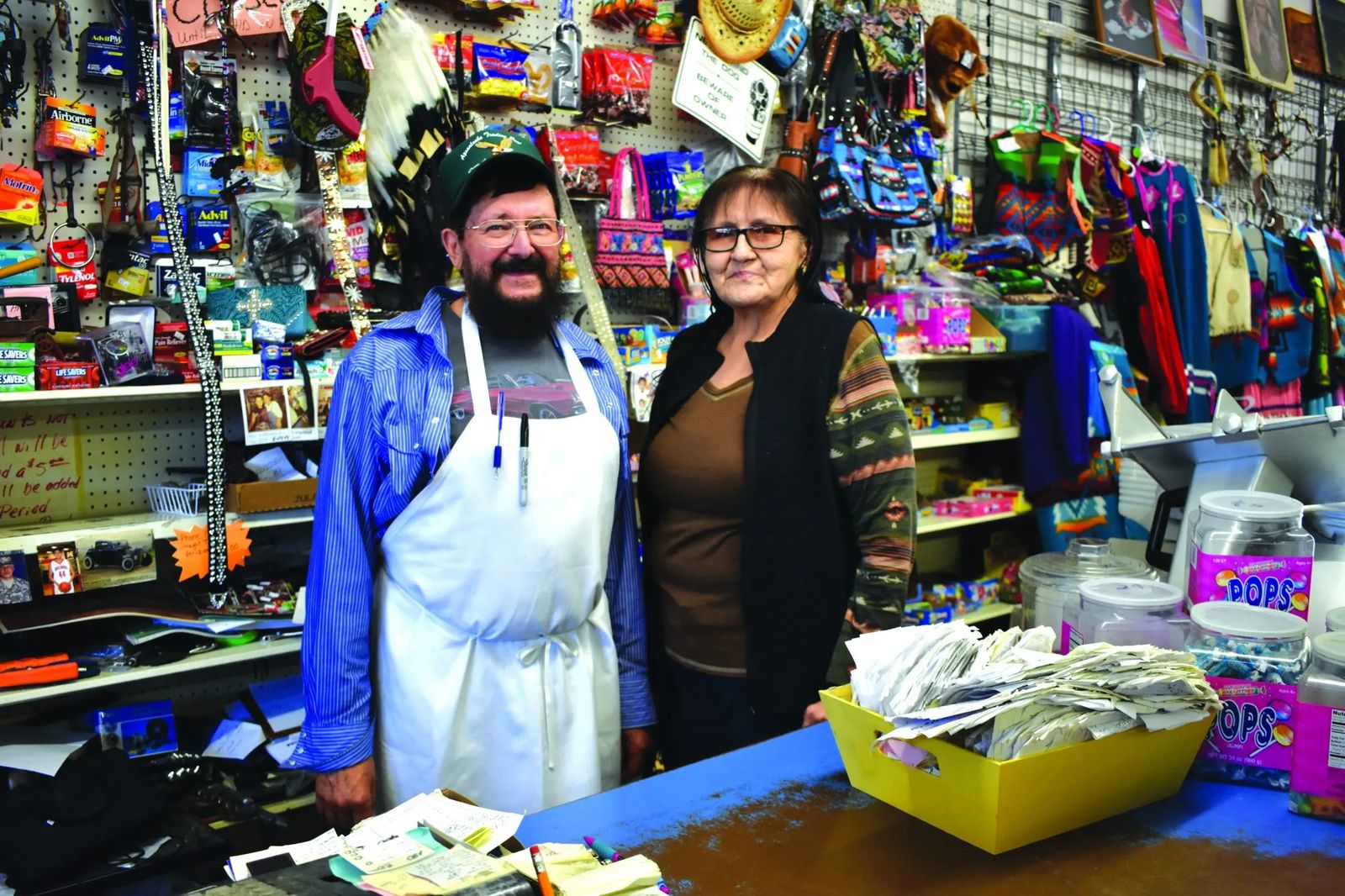
Like any community, Crow Agency is defined by its people. One long-time resident is George Steinmetz, the man-behind-the-counter at the Apsaalooke Trading Post. He doesn’t count pennies. In fact, he tends to round off the bill to your benefit. The smell of popcorn welcomes you at the door, where you’ll sense you’ve stepped back in time. Locals drift in and out as you discover an assortment of items ranging from groceries to colorful Pendleton vests to bins of tools and even matching pitchers with basins. Steinmetz, who’s owned the place for 35 years, laughs at the thought. “I’ve been here longer than some of these Crow have.”
Several streets to the north, Marie Lincoln works as a supervisor at Head Start. As she watched preschoolers turn the playground into a hive of activity, she spoke about long-ago times. “We used to have a lot of places to go,” she says. “The movies, roller skating and an ice cream shop.” She also laments the fact that so few young people can speak the Crow language. “Mostly they all talk English now,” she says.
Across town, Dr. Janine Pease, a professor at Little Big Horn College, has the statistics to back up Lincoln’s claim. Although 85 percent of adults older than 35 are fluent, she says, only 3 percent of the children know the language.
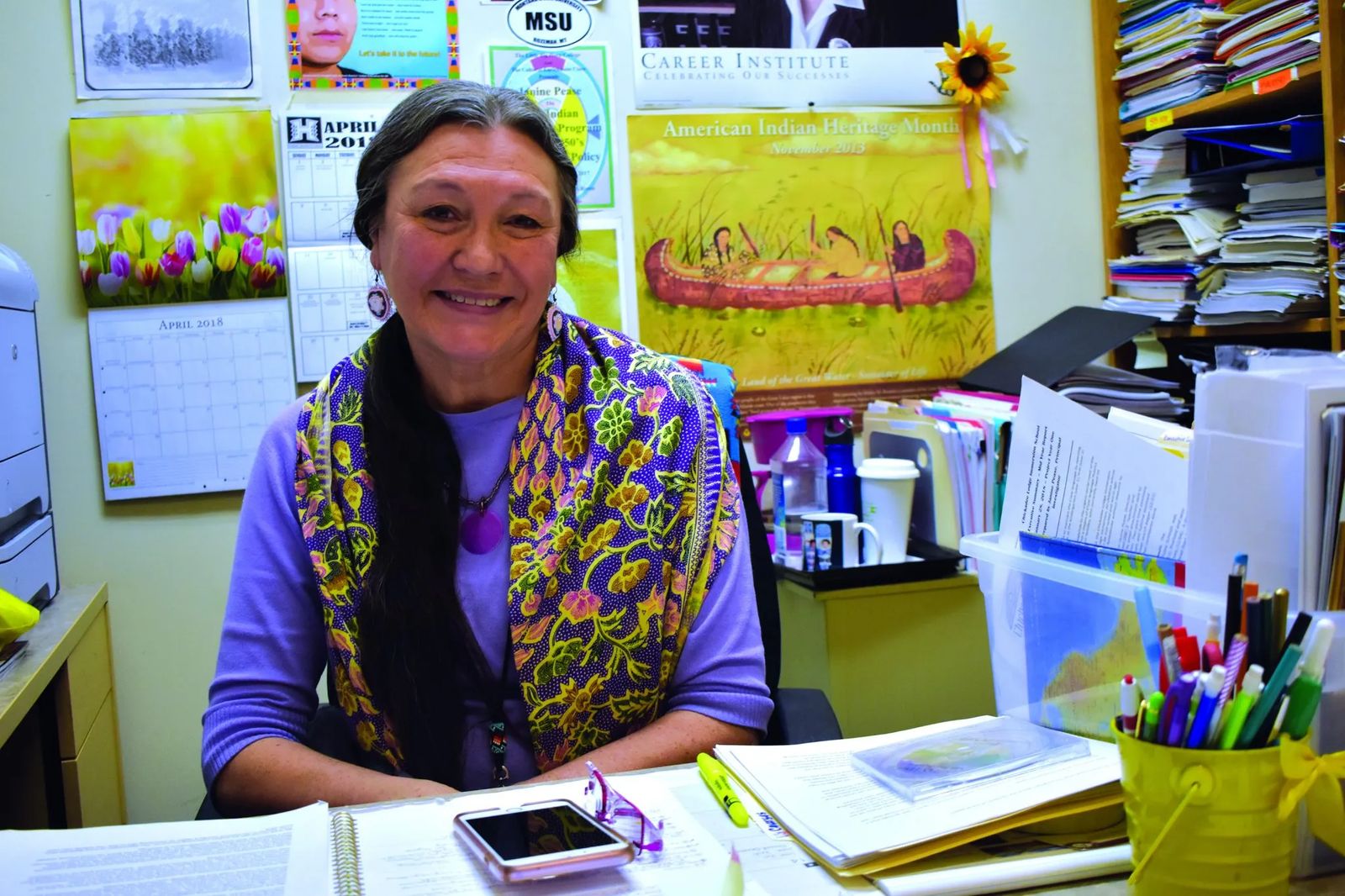
To address that loss, the college offers the Crow Summer Institute, the premier Crow language teacher event in the country. The college has also implemented Chickadee Lodge Immersion School for children in pre-school through first grade. Through that program, more than 200 children in schools across the reservation spend half of their school day learning only in Crow.
“This is a big turnaround if we can get these kids prolific in the Crow language,” Pease says.
To the west of the college and across the city park, Lindsay Rides Horse works in the tribal offices. She offered her take on Crow culture, describing some of the traditions still practiced — from dancing and singing to sweat lodges, sun dances and strong family ties.
“Our elders — we still go to them for their wisdom,” she adds.
Her words exude her love for the nearby mountains and the beliefs that bind the Crow to them. They still hunt, hike, camp and ride horses there, she says. The mountains are also the source of mountain-fed spring water.
“We bring that special water off the mountain and use it for coffee and tea,” she says. “Some use it for sweat (lodge) drinking water.”
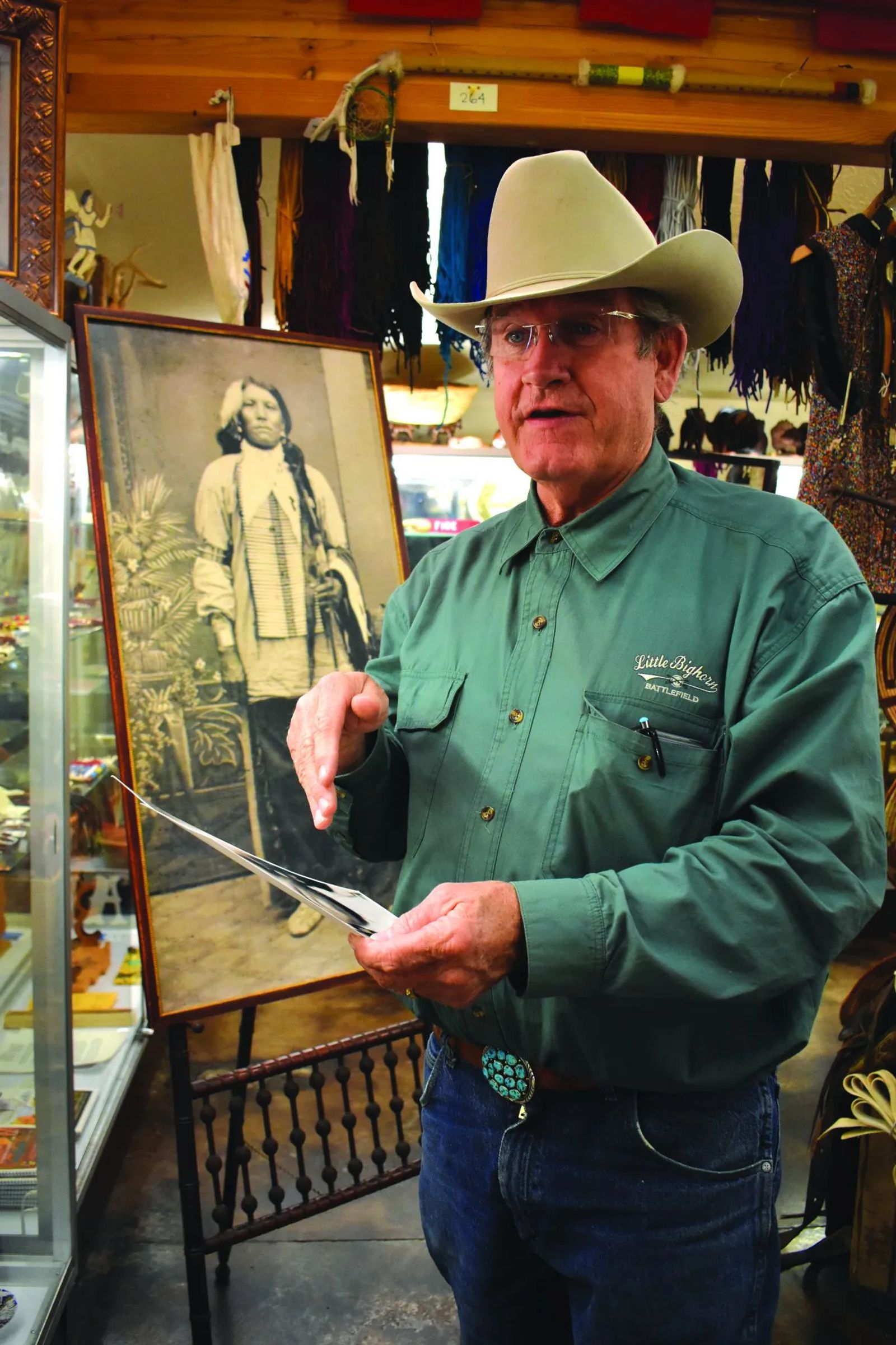
Just across from the national battlefield, the Custer Battlefield Trading Post is a destination unto itself, drawing travelers from around the world. Owners Putt and Jill Thompson represent the small fraction of non-natives who call Crow Agency home. The Thompsons came here more than 30 years ago, drawn by their interest in the history and the people of the area.
“I don’t know why, but I just felt that ‘I want to be where the Indians are,’” Putt says.
Early on, he absorbed much about his adopted society by listening and watching as locals came in with their stories and artifacts.
Since then, Putt has amassed quite a collection of artifacts and stories himself. He takes special pride in a small photo on display at the trading post. He’s confident it’s an authentic photo of Crazy Horse, the only photo of the famous Sioux chief who led his warriors to victory at the legendary battle that took place less than a mile away.
Outside the trading post, bundles of tipi poles lend the place its local color. Inside, the gift shop overwhelms the senses with its vast book collection, jewelry, western apparel and memorabilia.
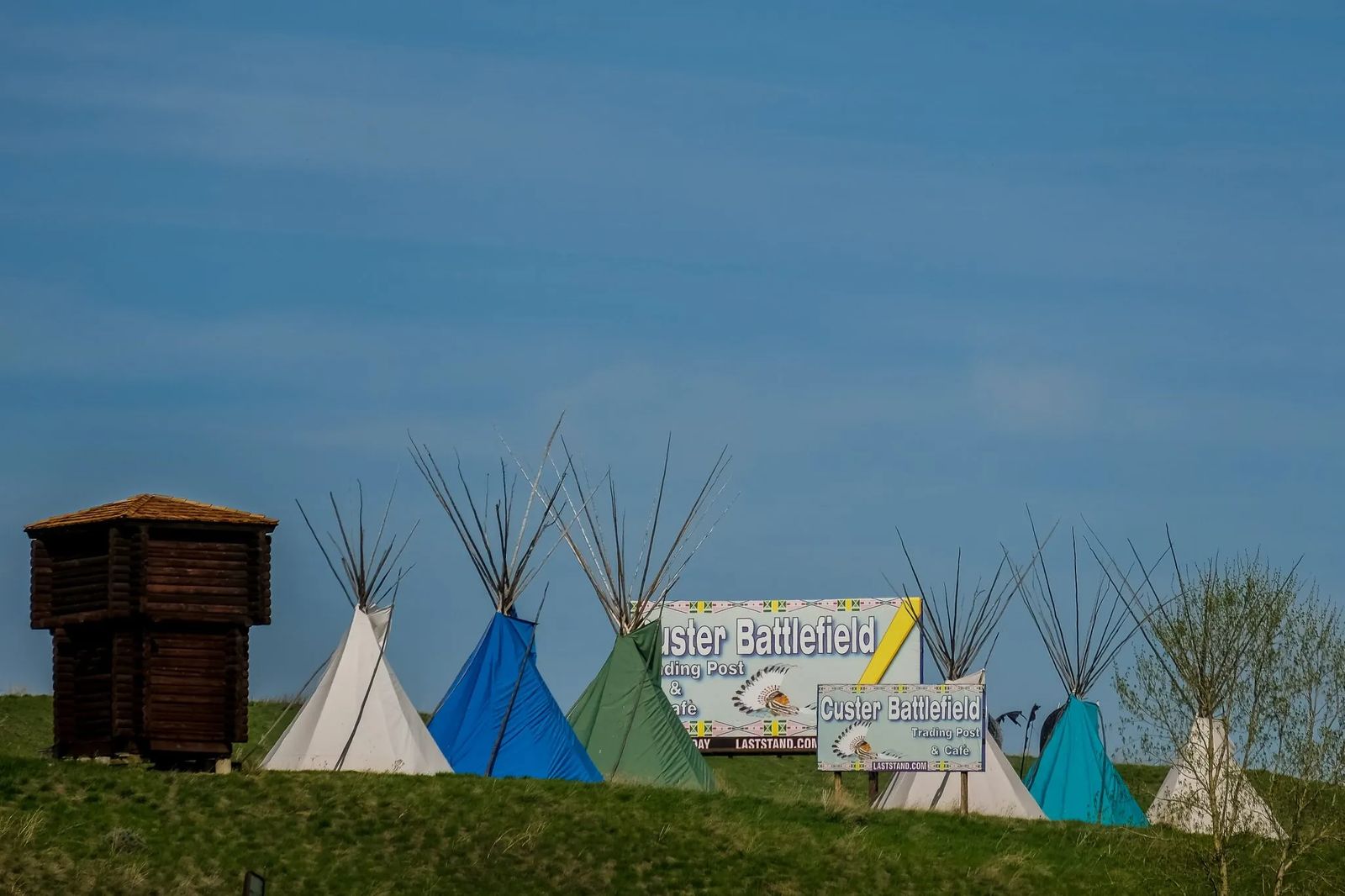
The café is known as the place to order a giant Indian taco. And if you’re lucky, your meal may be interrupted by a piercing neigh — so real that you’ll swear a stud was stabled in the kitchen. In truth, it’s Pam Dahle, who works the dining room. Her horse calls are so dead-on — she can replicate 20 different calls — that they’d elicit a response from any horse within hearing.
Thanks in part to Little Big Horn College, thousands of Crow tribal members have been able to further their educations. While the community college was chartered in 1980 as the 13th tribal college in the country, enrollment is open to anyone. Over the years, students from the East Coast and even France and Jamaica have enrolled to study and play basketball.
“We’re among the best-kept secrets in Montana,” Pease says.
With average class size around 20, enrollment has climbed as high as 440. Now, due to several factors — among them the 25 percent poverty level that makes college difficult — the student population has dropped to under 300. President David Yarlott, known by most as “Dr. Y,” hopes to turn that around. He’s also looking to the future with ideas for expansion and possibly even student housing.
The college emphasizes studies in the sciences, health and information technology, but adjusts its focus to meet local demand. More recently, that meant classes for commercial drivers’ licenses and heavy equipment operation.
“Because we’re a community college we can change fairly quickly,” Yarlott says.
The administration also works closely with Montana’s university system to make classes transferable. This year marks the first time the college has been given a seat at the Montana Board of Regents.
“We can’t vote but we can give input,” Yarlott says. “They’ve been very welcoming.”
As a land-grant college, LBHC also boasts an extension program that strives to encourage young Crow to take on the ranching and farming operations currently run by their parents and grandparents. Likewise, there are classes – on water quality and healing gardens — that link local agriculture with the Crow people’s deep roots in the natural world around them.
From the Wolf Teeth Mountains to the east, the Big Horns to the south and the Pryors to the west, the surrounding ranges are not only sacred places, but destinations for recreation. The Bighorn River, renowned worldwide as a fisherman’s paradise, flows from Yellowtail Dam roughly an hour’s drive to the southwest. The lake created by the dam affords recreationists miles and miles of coastline for fishing, boating and camping.
Closer to Crow Agency, the Little Bighorn River winds around town. Made famous by the battle that now shares its name, the river yields precious irrigation water for fields of alfalfa, wheat and barley.
The area is also dotted with cattle — mostly Black and Red Angus — that replace the long-ago bison herds that once rumbled through the area.
But it’s the horses — especially the horses — that capture the essence of the Crow people.
“Just about everyone owns a horse,” says Pease with a smile. “If not 25.”
Jim Real Bird exemplifies that bond between the Crow and their horses. Growing up in a family synonymous with everything equine, he’s spent his life around race horses, working horses and bucking horses. It runs in his blood.
“My dad and uncles were bronc riders and rodeo guys,” he says. “When we were 11 years old we were race jockeys. We’ve passed that onto our kids and our grandkids.”
On a day in late April, after moving his string of bucking horses, he was spending time with his 3-year-old granddaughter.
“She’s already quite the rider,” he says. “She gives me something to live for.”
With summer coming on and the grass still green, the natural richness of the area becomes ever-more apparent. The vivid scenes around Crow Agency bring life to words spoken long ago.
“The Crow Country is exactly in the right place,” said Chief Rotten Belly (Arapooash). “Everything good is to be found there. There is no country like the Crow Country.”
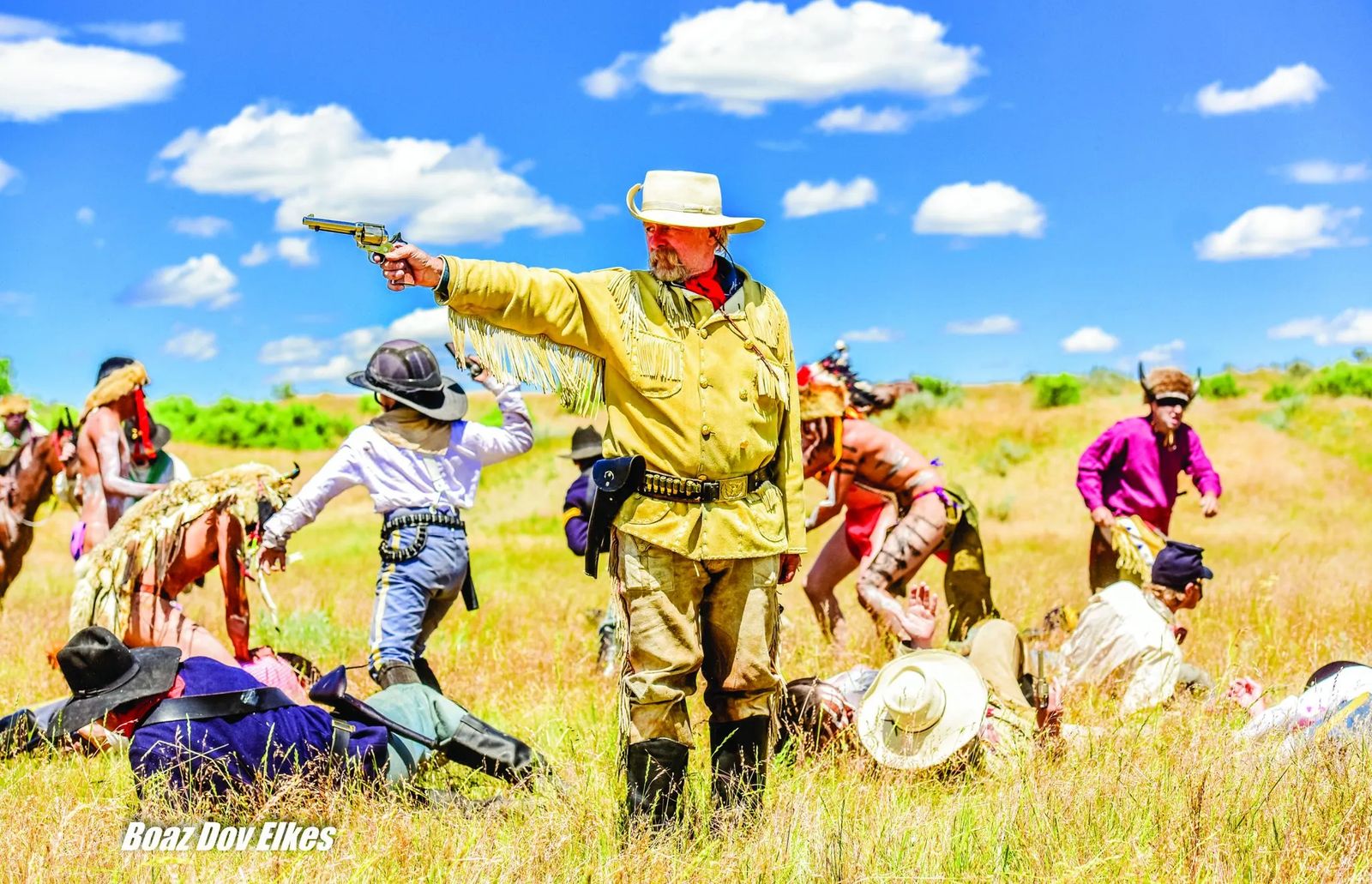
A COLORFUL SUMMER IN CROW AGENCY
What’s on tap
BATTLE OF THE LITTLE BIGHORN RE-ENACTMENT, JUNE 22-24
Listen for the thunder of horse hooves, then watch as mounted warriors in war paint and soldiers in uniform clash in the dust and chaos of battle.
“They gallop into the river and off the sandbar bareback,” says Jim Real Bird, organizer of the event. “At one scene there are over 100 head of horses. And you can see the flag at the cemetery, barely over the skyline. It’s something to see.”
The scene is so real that the audience watches from where the Ogallala set up camp in June of 1876. With narration based on the version told by Spotted Wolf, there’s history, context and plenty of live action in the battle also known as “The Battle of the Greasy Grass.”
There’s seating for 800, but Real Bird advises coming early to walk along the river, pass through the cavalry camp, watch the arrow throwers and listen to the singing. Then, after the battle, stick around to take photos with the warriors and “General Custer.”
Watch for signs at both the Garryowen and Hwy. 212 exits off Interstate 90. Gates open by 11 a.m. and the action is scheduled for 1 p.m. Tickets — $20 for adults and $10 for youths — can be purchased at the gate.
THE 100th CROW FAIR, AUGUST 15 - 20
If you’re looking for a glimpse into Crow culture, make sure to attend this year’s Centennial Anniversary of Crow Fair. For a few days in August, Crow Agency turns into the Tipi Capital of the World, with a village of up to 1,500 tipis. The crowd swells to 50,000 participants and spectators from all points on the globe who gather for parades, rodeos, horse races and a four-day powwow.
Native Americans, representing numerous tribes, don their finest colorful beadwork and buckskin for the largest event of its kind in Montana. From the morning parade to the varied dances and cultural activities of the evening pow-wows, Crow Fair is undoubtedly a spectacle. The event closes with “Dance through Camp,” a sort of ritual prayer for good things in the coming year.
THE LITTLE BIGHORN BATTLEFIELD NATIONAL MONUMENT
When the wind stirs the grass at the Little Bighorn Battlefield, it carries with it haunting memories from the battle that took place in 1876. With simple walkways, plaques and gravestones marking the sites of the dead, the site’s simplicity is powerful.
Besides strolling or driving the site, there’s a book store, visitor center and interpretive presentations.
“It’s one of the most studied battles in the United States next to Gettysburg,” says Ken Woody, chief of interpretation at the monument. “And, interestingly, Custer was at both places.”
The battle — memorialized in more than 5,000 books and papers — pitted the Sioux and Cheyenne against the U.S. Army’s 7th Cavalry, including Lt. Col. George A. Custer. Meanwhile, the Crow served as scouts for the army.
Last year, the monument drew more than 300,000 visitors from around the globe. Despite its proximity to modern-day Crow Agency, the town did not exist when the battle took place, Woody points out.
WHAT’S IN A NAME?
The Crow people refer to themselves as “Apsaalooke,” meaning “children of the large-beaked bird,” a term later misinterpreted by the white men to mean “Crow.”
CROW AGENCY BY THE NUMBERS
1,600-plus, Crow Agency’s population
95% of the population classified as Native American
14,178, number enrolled in the Crow Tribe
2 million, the size, in acres, of the Crow Reservation
















